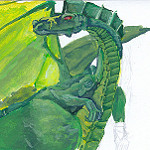I’ve been preparing for a conference where I’ll be presenting on plot structure and voice, among other things, and, in getting ready, I’ve been thinking a lot about what makes an author a cut above the rest. What is that special X-factor? The je ne sais quoi that can elevate someone with good technical skills to an expert writer?
We all know writing is a difficult craft to master and that publishing is a hard business to break into. We all know how impossible it can seem to write something totally fresh and new when stories have existed from the beginning and have been told and retold and retold again. And yet. There is nothing more exciting than discovering a story that surprises and delights you. Despite the fact that it seems every story has been told, new novels are published every year that prove otherwise. (Have you read Where the Crawdads Sing? That book is a work of art!)
I’m a big Brené Brown fan. In fact, I have a copy of Daring Greatly sitting right here on my desk as I write this piece. If you haven’t read it, I recommend that you do! It’s a great guide for how to approach your own life, but beyond that, I’ve found that Brown’s work on vulnerability is also the key to the X-factor of writing. The thing that makes you special, that makes you different from every other writer, is the fact that you are, well, you. Remember that as you embark on your writing journey.
Here are some things you can do or think about to ensure you’re writing in your unique way:
Write what you know (i.e. Know Thyself). I think this is one of the most misunderstood pieces of writing advice out there. To me, write what you know doesn’t mean you can only write your own life again and again and again. Not by a long shot! Write what you know means that you should connect with the many depths and shades of your emotional truths and put them on the page. It doesn’t matter if the truth appears in a galaxy far, far away or in a contemporary setting—it is the internal conflict a character is forced to grapple with and the growth they experience that keep readers coming back for more. If the emotional core of a novel feels visceral and real, readers will connect with it.
The universal is in the specific. As humans, we are all connected by common experiences, feelings, challenges. That’s what makes empathy and compassion possible. When a novel is truly engrossing, readers actually physically experience what the characters are experiencing—this happens on a neurological level. Trust that, no matter your character’s background, religion, sexuality, race, etc., readers have the capacity to connect. Then, rather than trying to write a story that will please everyone, focus on writing a story that will please you. Let your characters have flaws, quirks, strange interests, etc. What makes you unique is the eyes you see the world through. Let that come out in your narrative. The more you hone in on emotional details, the deeper you dive, the more specific you get, the more your characters and story will feel real, and the more readers will connect.
Write what brings you joy. One fundamental truth in life and in publishing is that things are always changing. What was trending two years ago isn’t trending now. The world moves along, and we are forced to move with it. Because of that, it is important to stay on top of what is happening in the book world and to be aware of where the successes in your genre are, but it is equally important not to write to a trend because, chances are, by the time you’ve finished writing your trendy book, the next trend will already have come along. Because of that, the most important thing is that you write a novel that you want to spend time with, that gives you creative pride, and that feels meaningful to you. When an author loves their story, it shines through in the work, and readers connect with that.
So go forth and enjoy the process of writing, of putting your own unique stamp on the world through your words. Because you are the only person in the history of the world who can be yourself.
Creative Commons Credit: Kurtis Garbutt









